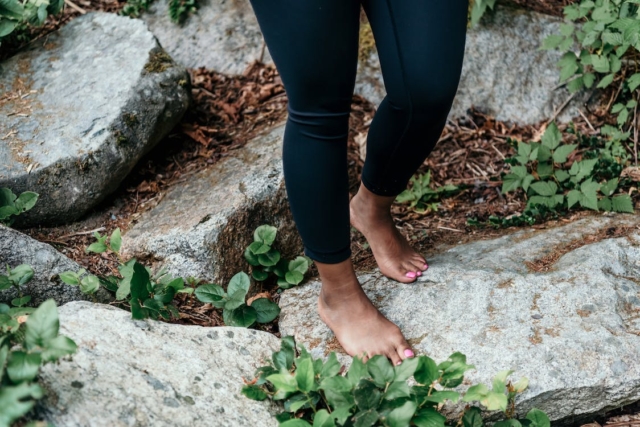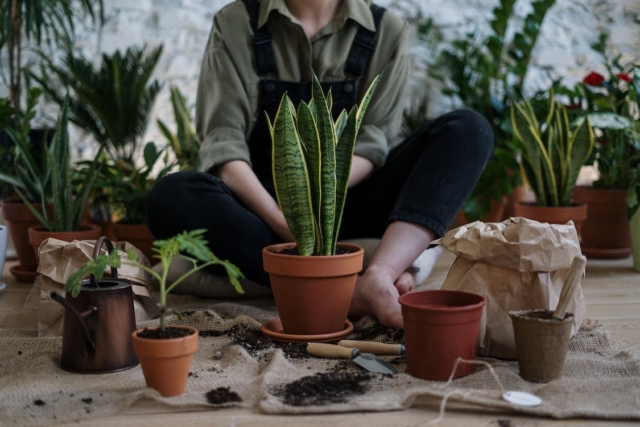How to Safely Enjoy The Summer Sun

This article contains some affiliate links to resources you may find useful, at no extra costs to you. All opinions are my own.
Lately I’ve been fascinated by the idea of living more in tune with nature. You see, the more I learn about how the ecological systems on our planet work and how our ancestors lived, the more it’s becoming clear that there’s a mismatch between how our bodies and minds were ‘designed’ and the way we live today.
All throughout history, human beings have gotten up at sunrise to do meaningful work, nourished themselves with unprocessed foods and moved their bodies all day long. They lived in small communities, with time for unstructured play, silence and devotion, and strong social connections. The daily lives of our ancestors were governed by natural daylight and the seasons, with its wide variations in temperatures and available produce.
As much as we’d like to think we have evolved since then, physically we have not changed that much. Our bodies still require fresh air, good quality sleep, plenty of movement and a wide variation of nutrients. Our brains are still wired for connection, reflection and daydreaming.
I could not track down the source, but there’s this audio clip going around online that goes sometimes like this:
“Humans are not meant to wake up in a box, eat out of boxes, drive to work in a box to work in a box, whilst staring at boxes, going home to our boxes, to stare at more boxes all day.”
Without romanticizing the past – hurray for health care and comfy homes with heating and stocked fridges! – there is some truth in that, that most of us have become disconnected from nature.
‘Rewilding your life’ refers to returning to a more natural state of being, by integrating some of the foundational practices and principles of our ancestors back into our modern lives. Human rewilding is about rekindling our connection with nature and choosing a more holistic way of living that’s in sync with our biology.
Now don’t get me wrong: I’m a Western woman living in the suburbs who loves her online business, on-demand entertainment and all the conveniences of the modern world. But it’s not hard to see that staring at screens for 7 hours a day on average, getting 50% of our daily calories from highly processed foods and sitting down for half of our waking hours has not contributed to our general health and happiness.
In his book The Comfort Crisis, Michael Easter says:
A radical new body of evidence shows that people are at their best—physically harder, mentally tougher, and spiritually sounder—after experiencing the same discomforts our early ancestors were exposed to every day.
Scientists are finding that certain discomforts protect us from physical and psychological problems like obesity, heart disease, cancers, diabetes, depression, and anxiety, and even more fundamental issues like feeling a lack of meaning and purpose.
That sounds great, but how do you embrace those types of discomfort and get back in tune with nature when you already have serious health problems?
Let me be very clear: There is nothing wrong with using and embracing modern conveniences to make your life a little easier.
I’ve been stuck at home with juvenile rheumatism, ME/CFS and fibromyalgia in the ’90s, when you still had to dial into the Internet to exchange the occasional email. So I know all too well how much more accessible life has become for people with chronic illness in the last decade, thanks to being able to search (health) information online, to connect with like-minded people through social media when you’re sick in bed, to enroll in distance learning or to work remotely from home. Not to mention how happy I would have been back in the day with on-demand entertainment and online shopping, instead of asking my mom and sister to get me new clothes and books when needed.
Technology and science have brought us countless of advantages we enjoy every day, so this article is not meant to paint a romanticized picture of going off grid or living like a caveman.
I also get that one of the core problems of being chronically ill is that we cannot do many of the things that should be natural to us. Depending on your specific health problems, you may not be able to move your body freely, spend time outside or cook meals with fresh ingredients from scratch.
Luckily, you don’t have to move to a homestead, forage for food, plunge into ice baths or make other drastic changes to start rewilding your chronic life. With a few simple tweaks to your current lifestyle, you can already start to enjoy the benefits of a more natural lifestyle – even if you’re sick at home or live in the city.
So if like me, you are intrigued by living more in sync with nature, take a look at 10 accessible ways you could start to rewild your chronic life.

Before we get started: Not all of these tips will be doable for everybody. Despite keeping all kinds of limitations in mind, what will work for you depends on your specific health status and personal situation. You also don’t have to do it all – or all the time – to notice some benefits. So take inspiration from these ideas, but modify where needed and do not feel discouraged if there’s no way you can do certain things right now.
Light is one of the most important ‘Zeitgebers’ in our lives, signaling to our bodies that it’s time to prep for the day or that you need to start unwinding for a good night’s sleep. When your eyes catch the morning light, it triggers neurochemical reactions in your brain that increase your cortisol levels for that much-needed energy boost. At night, when it starts to get dark, melatonin gets released to slowly make you feel sleepy.
But nowadays, we spend most of our waking hours indoors, with the same electrical lighting no matter what time of day it is. That makes it harder for your body to fine-tune your internal clock, which in turns leaves you feeling groggy and hungry for sweets. And despite feeling tired all day, it’s actually harder to fall asleep at night when your body clock gets disrupted.
In contrast, exposing yourself to ultraviolet light (UVB) enhances your immune function and improves your tolerance for pain. According to dr. Andrew Huberman, getting 20 to 30 minutes of sunlight on 3 days per week can even help to ease chronic pain. Catching the early morning daylight also balances your hormones and increases the release of serotonin, the feel-good chemical that plays an important role in depression and seasonal affective disorder. Pretty impressive, right?
So one simple way to rewild your chronic life is to let the light in. Here are some ideas how you can expose yourself to natural daylight, even if you’re sick:
“Even on a cloud-covered day, you are going to get far more light energy, photons, through cloud cover than you are going to get from an indoor light source, an artificial light source.” – Dr. Andrew Huberman.
To live in tune with nature, you should also dim your lights at night. This will give your brain a cue it’s time to start winding down and prepare for sleep. So don’t use bright, overhead lighting in the evening, but choose lower placed (desk) lamps or safely light candles.
What’s more, turn off your electronic devices one hour before bedtime. The blue light coming from your screens interferes with the production of melatonin, the hormone needed to fall asleep. You could also consider getting blue-light blocking glasses – although putting away your screens benefits your sleep in other ways too. At night, keep your bedroom dark and try to turn on as little lighting as safely possible when you have to get up to the bathroom.
For everything you could ever want to know about the impact of light on your body and brains, check out this crazily detailed video or podcast ‘Using Light (Sunlight, Blue Light & Red Light) to Optimize Health’ from Huberman Lab.

Caution: If you have diabetes and/or peripheral neuropathy, please check with your doctor whether it’s wise to go barefoot, to avoid dangerous complications.
Your feet literally form the foundation for your posture and movement. But many of us wear fashionable shoes that restrict our foot mobility, sometimes with high heels that shorten your calve muscles and thicken your tendons. And these foot problems can lead to bad posture and changes in your gait, which in turn contributes to stress on your ankles, knees and hips.
Experts indicate that walking barefoot can restore our natural walking pattern. You have better control over the placement of your foot on the ground and your toes can spread more widely after rolling over the ball of your foot. That’s how going barefoot can improve your alignment, range of motion and balance, and strengthen your feet, ankles and leg muscles.
What’s more, connecting to the earth with your feet in the sand, grass or soil may have special benefits. Although the scientific debate is still ongoing, some studies suggest that ‘grounding’ or ‘earthing’ could have a positive effect on your immunity and pain levels.
On a more practical note: according to Katy Bowman, author of Move Your DNA, treading on different surfaces like muddy paths, rocks, or the forest floor uses different muscles in your feet, legs and body. What’s more, navigates uneven terrain engages your brain, giving it both a healthy workout while taking your mind off your worries.
Now in our modern world, you need to wear shoes to avoid injuries and getting sharp objects piercing your feet. But maybe there are still accessible ways to enjoy the benefits of going barefoot?
Machines and automatizations have taken over a lot of the manual labour that people used to do, and in many ways that’s great. I definitely prefer spending my days doing work I enjoy instead of washing clothes by hand. But replacing those physical activities does not just contribute to a more sedentary society, it impacts our mental health too.
Neuroscientist Kelly Lambert, author of ‘Lifting Depression’, found that hands-on activities like kneeling dough, knitting a sweater and tending a garden have a positive effect on your mood and stress levels. So many of our daily tasks require our mental energy, which can be taxing on your brain. By getting out of your mind and focusing more on bodily sensations to work towards a tangible result, you can reduce stress and anxiety and build resilience against depression. That’s because interactive experiences in the real world, with results that don’t just live on your computer but you can actually see and touch, produce strong reactions in the reward circuit of your brain.

Ironically, working with your hands does wonders for your brain. But how can you be more hands-on when your chronic illness comes with physical limitations?
Eating with the seasons isn’t just good for the planet and your budget, it also provides you with the best produce at that time, containing the specific nutrients you need during that season.
Putting a healthy meal on the table can be challenging enough as it is when you’re living with chronic illness, so how could you eat with the seasons when you have limited energy and mobility?

You know how sitting is called the new smoking? It turns out that living a mostly sedentary lifestyle increases your risk of disease and premature death even if you do get a few workout sessions in each week. Sitting behind a desk, in the car and on the couch for many hours each day shuts down your metabolism and reduces your circulation.
But for many people with chronic illness it’s painful, exhausting and sometimes impossible to move your body frequently.
One possible way to add more gentle movement into your days without increasing your symptoms is by practicing ground living. It sounds strange, but sitting on the floor activates more and different muscles than using a chair, improves your flexibility and engages your core to stay stable. Being able to get up from the ground without using your hands actually requires so many different aspects of fitness, that it’s used as a quick test to predict longevity. In Be More Human, Tony Riddle also argues that practicing ground sitting is fundamental to rebuild a good posture that prevents aching and injury from the ground up, literally.
Here are some simple ideas how you can (comfortably) rewild your chronic life by practicing ground living:
We’re so used to live in climate-controlled homes and buildings, that you’d almost forget that until pretty recently, the human race always had to adapt to the ever-changing temperatures.
As great as it is to have central heating and air conditioning, it turns out that exposing yourself to a more varied temperature range actually has some health benefits too. Science indicates that being in mild cold and warm indoor environments – just outside of the standard comfort zone – increases your metabolism and energy expenditure, which can help with obesity and type 2 diabetes.
Hot and cold temperatures both have their own effects on your health. Research shows that exposing yourself to the cold – safely and shortly, and preferably in the morning – increases your energy levels and mental focus, enhances your mood and boosts your metabolism. On the other hand, heat therapy supports your blood and lymph circulation, speeds up wound healing and soothes sore muscles and aching joints.
Caution: Always check with your doctor if cold exposure or heat therapy are suitable for your condition, especially if you are pregnant or if you have a cardiovascular diseases, diabetes or skin problems.
Without putting too much stress on your body, how can you get more comfortable with fluctuating temperatures, and reap the health benefits of the cold and heat?
Sadly, some chronic illnesses like MS, Graves’ disease and diabetes can make you more sensitive to changes in temperature. If that’s you, it’s important to take extra precautions to prevent heat stroke and hypothermia. You’re not being overly sensitive – temperature sensitivity is a real and annoying symptom. However, when temperature sensitivity is caused by poor fitness and poor blood circulation, it can help to slowly and gently get more comfortable again with fluctuating temperatures. Try to spend time outdoors every day (if only for a few minutes) or alternate warmer and cooler water while taking a shower.

We spend most of our waking hours indoors – especially if you’re chronically ill – but being outdoors enhances your health and happiness in so many unique ways. Not only do you get the benefits of natural daylight, vitamin D-producing sunshine and fresh air, spending time in nature lowers your blood pressure and cortisol levels, calms your nervous system and boosts your brain functioning and emotional health. Staring into the distance – compared to looking at screens or being in rooms – also improves your eye sight. What’s more, studies show that going camping is the ideal way to reset your circadian rhythm and improve insomnia.
Ideally, you should get at least 120 minutes of outdoor time in each week. But chances are, it can be challenging to head outdoors with limited mobility, temperatures sensitivity and/or legitimate fear of experiencing scary symptoms outside of the relative safety of your own home. So how can you still rewild your chronic life and get your daily nature fix when you’re chronically ill?
More people than ever are living alone, and over half of the world’s population now lives in cities. This development is not good or bad in itself, but it is very different from the long history of multiple generations living under one roof and of people living in small communities or tight-knit tribes.
As much as we value our independence, humans are hard-wired for connection. Neuroscientists have found that the networking in our brain for social thinking gets activated the second our non-social brain network quiets down – implying that our brain wants to be prepared to see the world socially whenever it can. What’s more, the social pain from a cruel remark feels as real as physical pain, and loneliness and social isolation actually hurt our health.
However, staying connected with your family, friends and acquaintances can be difficult when chronic illness stops you from socializing as often and in the way you’d like to. Especially if you’re stuck to home most days, you may feel left out and alone. What can you do to build a supportive tribe despite your limitations?
We all know it: you have to move your body to strengthen your muscles and bones, keep your heart healthy, support your metabolism, boost your mood and stay sharp mentally. But exercising with chronic illness can be impossibly hard, and sometimes even worsens your symptoms (temporarily).
Thankfully, you don’t have to go to the gym for an intense workout to get these benefits. After all, your (great) grandparents never wore sneakers and yoga pants in their lives. It’s perfectly possible to enjoy natural movement, without overdoing it and causing post-exertional malaise. You can do physical activities you enjoy, go at your own pace and take breaks when needed – and still support your health.
So what does rewilding your fitness look like? In his Primal Fitness blueprint, Mark Sisson sums up the natural movement of human beings throughout history like this: move frequently at a slow pace, lift heavy things and run really fast once in a while.

How can you translate those principles into illness-proof strategies to move your body naturally? That all depends on your specific health and fitness levels, but here are some activities to try:
With chatting people around you, music or the TV playing in the background, pings from notifications on your phone, how much time do you spend in silence?
Most of us hate to be alone with our own thoughts. So much so, that during a shocking study, participants preferred to give themselves a mild electric jolt than to sit alone in a quiet room for 15 minutes. But as much as we seem to hate not getting input that distracts us from unpleasant thoughts and feelings, our brains do need time for daydreaming and wandering freely. We need quietude to collect our thoughts and connect the dots between all the information you gathered all day long.
Although being sick at home alone is definitely not fun, there is beauty to be found in stillness and solitude. When it’s silent, you can drown out the noise from the world around you and listen to your own inner voice. Stillness can also calm your racing mind, which in turn lowers your blood pressure and cortisol levels, and increases your chances of a good night’s sleep.
So how can you embrace the silence in our busy, always- connected urban world?

You can still embrace the conveniences of our modern world and rewild your chronic life by making small changes to your current lifestyle. Hopefully the tips above have given you many illness-proof ideas to live more in tune with nature, even if you’re in the city.
For more ideas on how to rewild your life, check out ‘Be More Human’ by Tony Riddle or ‘Rewilding’ by Micah Mortali. You could also learn more about embracing discomfort in ‘The Comfort Crisis’ by Michael Easter, or get inspired to spend more time outdoors through The 1000 Hours Outside book or podcast.